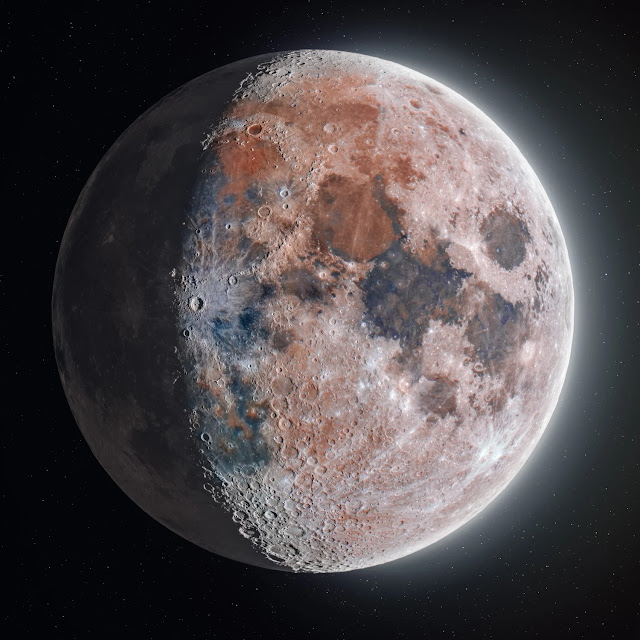‘Behold’ The Most Ridiculously Detailed Photograph of the Moon Ever
With more than 200,000 photos, two astrophotographers have just published what they call the “most ridiculously detailed picture” of the Moon to date.

A breathtaking single image composed of more than 200,000 individual images of the Moon has been revealed after a two-year quest to capture the Moon in previously unseen detail.
According to the two astrophotographers who took the image—Andrew McCarthy and planetary scientist Connor Matherne—it is “the most ridiculously detailed picture” of the Moon that has ever been taken.

The oxidation of iron and feldspar by stray oxygen atoms from the Earth is the source of the red hue. The hues in the image above are closer to the Moon’s actual colors, even though the Moon does appear different from regular images here. Since our eyes aren’t sensitive enough to notice the colors, Matherne corrected the image’s color by boosting the saturation to highlight the red and blue that are now visible to us.
In an interview with NPR, McCarthy explained that the image was “assembled like a mosaic,” with each tile being made up of hundreds of photos shot over the course of two years.
McCarthy used Twitter to explain the image’s inspiration, claiming that the two astronomers were motivated by NASA’s dedication to putting people back on the Moon, particularly the impending Artemis 1 mission.
According to McCarthy, this breathtaking image of the Moon is a “love letter” to the Artemis 1 mission, which won’t take off till August 29.
Concerning the Artemis 1 mission, NASA recently relocated its Space Launch System (SLS) rocket to its launch pad at the Vehicle Assembly Building at the Kennedy Space Center in Florida, where the 322-foot-tall rocket will go through its final inspections before taking off on a lunar reconnaissance mission.
The rocket and NASA’s Orion capsule will go around the Moon as part of the plan, gathering crucial information about the trip that will be used to improve the safety of human astronauts slated to travel on the same mission in 2024—Artemis 2.
Reference(s): ScienceAlert, (Andrew McCarthy/Connor Matherne)





